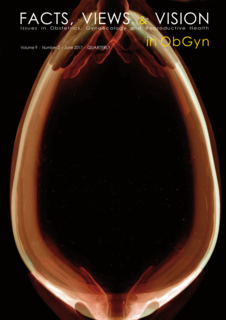Correlation between follicle dimensions recorded by patients at home (SOET) versus ultrasound performed by professional care providers.
self-operated vaginal sonography, follicular growth monitoring, ART cycles, SOET, patient friendly, telemonitoring
Published online: Feb 16 2018
Abstract
Introduction: Serial measurements of the number of follicles and their growth by ultrasound is a standard way of monitoring fertility treatments using controlled ovarian stimulation. This is stressful for both the patient and the professional. Self-operated endovaginal telemonitoring (SOET) is more patient friendly and less time-consuming.
Aim of the study: The goal of the study is to see if there’s a correlation in the number of follicles and in two- dimensional growth between recordings made using SOET versus measurements performed by a professional sonographer.
Results: Three different ultrasound moments were recorded and compared in a total of 15 women. At time A an ultrasound was performed by the patient at home using SOET at the decision time of triggering. At time B an ultrasound was also recorded by the patient, 24 hours later. At time C an ultrasound was performed by a physician using a high end ultrasound device immediately prior to oocyte retrieval, 12 hours later than time B. The correlation in number and two-dimensional size between the different measurement moments was calculated. There is an excellent correlation in follicle count between time B and C. The difference in mean two-dimensional size between different measurement moments was not statistically significant.
Conclusion: SOET ultrasound correlates well with ultrasound performed by a professional in number of follicles. SOET is a good alternative for monitoring controlled ovarian stimulation in a well-defined population group of normal responders, especially near the end of the ovarian stimulation.



